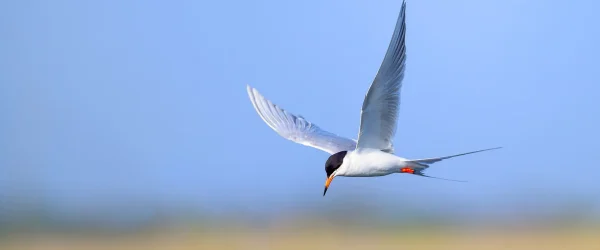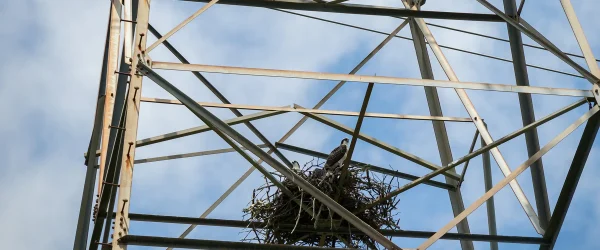Ecology and Statistics Combined: WEST’s Approach to Wildlife Impact Assessment and Resource Monitoring
WEST applies scientific rigor and data-driven methodologies to wildlife research and monitoring, providing clients with the insights needed for effective conservation and regulatory compliance. Our experienced team of ecologists, botanists, statisticians, and biologists employ cutting-edge technology, field survey methodology, and analytics to study a diverse suite of wildlife species and their habitats.
Our Expertise

Big Game
WEST has decades of experience and expertise to help clients with big game research, management, planning, monitoring, and mitigation efforts.
Our expertise includes:
- Population survey and study design
- GPS data analysis, visualization, and application
- Resource selection and movement modeling
- Impact assessments
- Species-specific conservation strategies for development plans
This work supports informed big game management and development planning—reflecting WEST’s longstanding expertise in population analysis, movement modeling, and impact assessment.

Detection Dog Services
WEST’s detection-dog teams enhance traditional wildlife surveys, providing highly efficient carcass detection, and species identification in challenging field conditions.
Our expertise includes:
- Post-construction carcass detection at wind and solar facilities
- Wildlife presence/absence surveys
- Scat detection and habitat analysis
This work improves survey accuracy and efficiency—demonstrating WEST’s innovative use of detection-dog teams for wildlife monitoring in complex environments.

Rare, Threatened, and Endangered Species
WEST’s experience extends to avian, terrestrial, and aquatic species that are either protected under federal and state laws or routinely raised as species of concern by wildlife agencies. Our team develops species-specific study designs to support project planning and impact assessment, long-term monitoring efforts, and conservation initiatives.
Our expertise includes:
- Endangered Species Act compliance
- Presence/absence surveys and population assessments
- Avoidance, minimization, and mitigation strategies
- Population assessments and habitat mapping
- Long-term monitoring
Our expertise encompasses a diverse array of species including bat monitoring through acoustic surveys and mist-netting, eagle risk assessments and mitigation strategies, and grouse conservation using advanced telemetry and habitat modeling. We also specialize in whooping crane conservation with habitat evaluations and impact assessments, as well as insect pollinators and seabirds.

Seabirds and Shorebirds
With deep expertise in coastal and pelagic bird ecology, WEST supports effective conservation and permitting strategies for seabirds and shorebirds. Our team has decades of experience conducting applied research to inform risk assessments, spatial planning, monitoring, and mitigation for species ranging from nearshore nesting birds to highly migratory oceanic birds.
Our expertise includes:
- Bird tagging (e.g. Global positioning system, very‐high‐frequency tag, platform transmitter terminal) and movement analyses
- Spatial analyses for density and habitat use
- Colony monitoring and nesting habitat restoration
- Aerial/vessel survey design and analysis
- Statistical modeling for take estimation
- Risk and vulnerability assessments
- Compensatory mitigation planning
This work advances seabird and shorebird conservation and compliance—highlighting WEST’s deep expertise in avian ecology, movement analysis, and mitigation planning.

Uncrewed Aircraft Systems Services
WEST utilizes cutting-edge Uncrewed Aircraft Systems (UAS) technology, including our own built-from-scratch UAS designed for wildlife detection, to conduct environmental surveys and research. By combining UAS and machine learning, WEST has developed advanced survey approaches that result in greater efficiency and/or effectiveness over existing survey methods.
Our expertise includes:
- Vegetation mapping and monitoring (landcover, wetlands, noxious weeds)
- Anthropogenic mapping
- Bird nest surveys
- Prairie dog burrow mapping
- AI-assisted wildlife counts and classification
- High resolution thermal imaging
- Wildlife detection
This work enhances environmental survey precision and efficiency—showcasing WEST’s innovation in UAS technology, machine learning, and wildlife detection.

Wildlife Image Analysis
WEST leverages advanced camera trap analysis, machine learning, computer vision, and statistical modeling to provide critical insights into wildlife behavior, population dynamics, and habitat use, supporting conservation and research questions.
Our expertise includes:
- Wildlife population monitoring
- Species-specific behavioral studies
- Impact assessments for development projects
- Machine learning integration
- Custom computer vision model development
- Secure data management
This work delivers key insights for conservation and development—highlighting WEST’s expertise in camera trap analysis, machine learning, and wildlife population modeling.

Wildlife Power Interactions
WEST combines infrastructure design knowledge with biological and landscape insights to provide upfront design input and comprehensive risk assessments. Following Avian Power Line Interaction Committee guidelines to manage avian electrocution, collision risks, and nesting, we proactively address infrastructure design and support reactive measures to support overall service reliability.
Our expertise includes:
- Avian and wildlife electrocution risk assessments for power poles and substations
- Infrastructure design reviews
- Avian collision risk assessments and line marking analysis
- Avian protection plan development
- Nest management
This work promotes wildlife-safe infrastructure and service reliability—underscoring WEST’s integrated expertise in risk assessment, avian protection, and design consultation.
Representative Projects
Prairie Dog Burrow Mapping
Pre-construction Prairie Dog Burrow Mapping
Outcome: Performed prairie dog burrow mapping at eight solar projects using an aerial perspective with a faster turnaround time than traditional methods. The aerial perspective reduces the likelihood of missing prairie dog colonies and enables mapping of individual burrows when needed.
- South Dakota, Colorado
- Solar, Wind
Property and Environment Research Center Elk Classification
Wildlife Image Analysis – WildWatch
Outcome: This was the first external WildWatch project. The client faced an image processing bottleneck, which limited their ability to expand the program to additional landowners. We eliminated this bottleneck and grew both their program and our WildWatch and wildlife image analysis services.
- Montana
- 6 Months
- Private Conservation
Sweetwater Solar
Pre- and Post-construction Research
Outcome: Led the first study of solar development and big game. One publication is complete, and another is under review. Positioned WEST as a leader in the field by providing layout design consultation aimed at minimizing impacts to big game.
- Wyoming
- 6 Years
- Solar
Michigan Wind Project
Detection Dog Post-construction Fatality Monitoring
Outcome: WEST conducted a post-construction fatality monitoring study to evaluate the effectiveness of a bat conservation strategy in the context of potential take of federally listed bat species. The study compared an acoustic-triggered smart curtailment system with blanket curtailment and found that both approaches resulted in similar bat fatality rates. By incorporating detection-dog teams, WEST achieved a 75% searcher efficiency, higher than the 47% rate achieved by human technicians, leading to more accurate fatality estimates that support the study results and reinforce the value of innovative monitoring techniques.
- Michigan
- Wind, Solar
Oso Grande Wind Project Eagle Compensatory Mitigation Program
WEST’s Wildlife-Power Interactions (WPI) Team partnered with Tucson Electric Power (TEP), a subsidiary of UNS Energy, Inc., to assist with the development and implementation of a permittee-responsible eagle compensatory mitigation program for a wind energy project’s eagle incidental take permit. This successful collaboration involved close communications and working relationships with the US Fish and Wildlife Service and a partnering rural electric cooperative utility. WEST helped TEP navigate the permitting and mitigation plan requirements, built necessary relationships, and applied expertise in bird-electric infrastructure interactions, completing a golden eagle risk assessment and guiding power pole retrofit selection, verification, and documentation using Avian Power Line Interaction Committee guidelines and industry standards.
- New Mexico
- 5 Years
- Power Lines, Wind
Red Knot Collision Risk Model
Statistical Methods for Take Estimation
Outcome: WEST devised a collision risk model to estimate the mortality of the US federally threatened red knot to inform the development of the proposed Cape Wind project in Nantucket Sound, Massachusetts. The model incorporated an unprecedented level of species- and location-specific biological and meteorological detail as well as best available information on avoidance rates and CRM parameters from the US and Europe.
- Desktop
- 1 Year
- Offshore Wind
Discover WEST’s library of scientific publications and reports highlighting our work in environmental research, wildlife monitoring, renewable energy, and data-driven solutions.
Client Testimonial
Leslie Carpenter – Sr, Environmental and Land Use Planner
“The Wildlife-Power Interactions Team at WEST Inc was instrumental in helping us obtain an eagle individual take permit for our wind power project in New Mexico. From the start they expertly guided us through the whole process of plan approvals, Federal coordination, and mitigation. We appreciated their approach to working closely with our company, listening to our concerns, giving us options, and not being obtrusive. They respected our company’s opinion and are truly professional. We would not hesitate to use them again.”
Partner with WEST for Wildlife Research and Monitoring Services
Contact us to discuss your wildlife research and monitoring needs.


